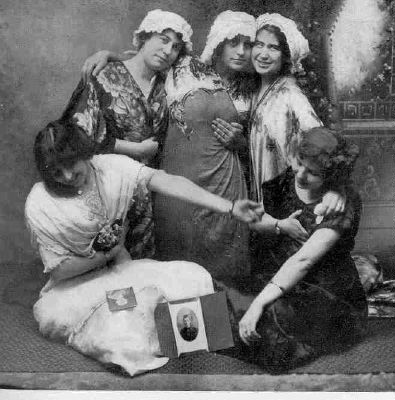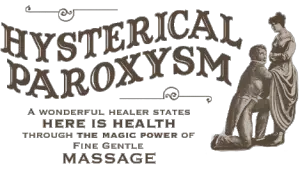Eeeeekkkkkk!!!...
— Due to the nature of this subject, it may be inappropriate for children.
Female hysteria was once a common medical diagnosis, made exclusively in women. The history of the notion of hysteria can be traced to ancient times. Galen, a prominent physician from the second century, wrote that hysteria was a disease caused by deprivation in particularly passionate women: hysteria was quite often in virgins, nuns, widows and, rarely, in married women.

Treatment for Female Hysteria
The prescription to this disease in was intercourse. As a last resort, in the case of virgins or nuns, women considered to be suffering from hysteria would sometimes undergo “pelvic massage” manual stimulation of the genitals by the doctor until the patient experienced “hysterical paroxysm“.

Hysteria is widely discussed in the medical literature of the Victorian era. In 1859, a physician claimed that a quarter of all women suffered from hysteria. He cataloged possible symptoms, which included faintness, nervousness, insomnia, fluid retention, heaviness in abdomen, muscle spasm, shortness of breath, irritability, loss of appetite for food or sex, and “a tendency to cause trouble.

With so many possible symptoms, hysteria was always a natural diagnosis when the ailment could not be identified. For instance, before the introduction of Electroencephalography (EEG), epilepsy was frequently confused with hysteria.
Physicians thought that the stresses associated with modern life caused women to be more susceptible to nervous disorders and to develop faulty reproductive tracts.


No comments:
Post a Comment